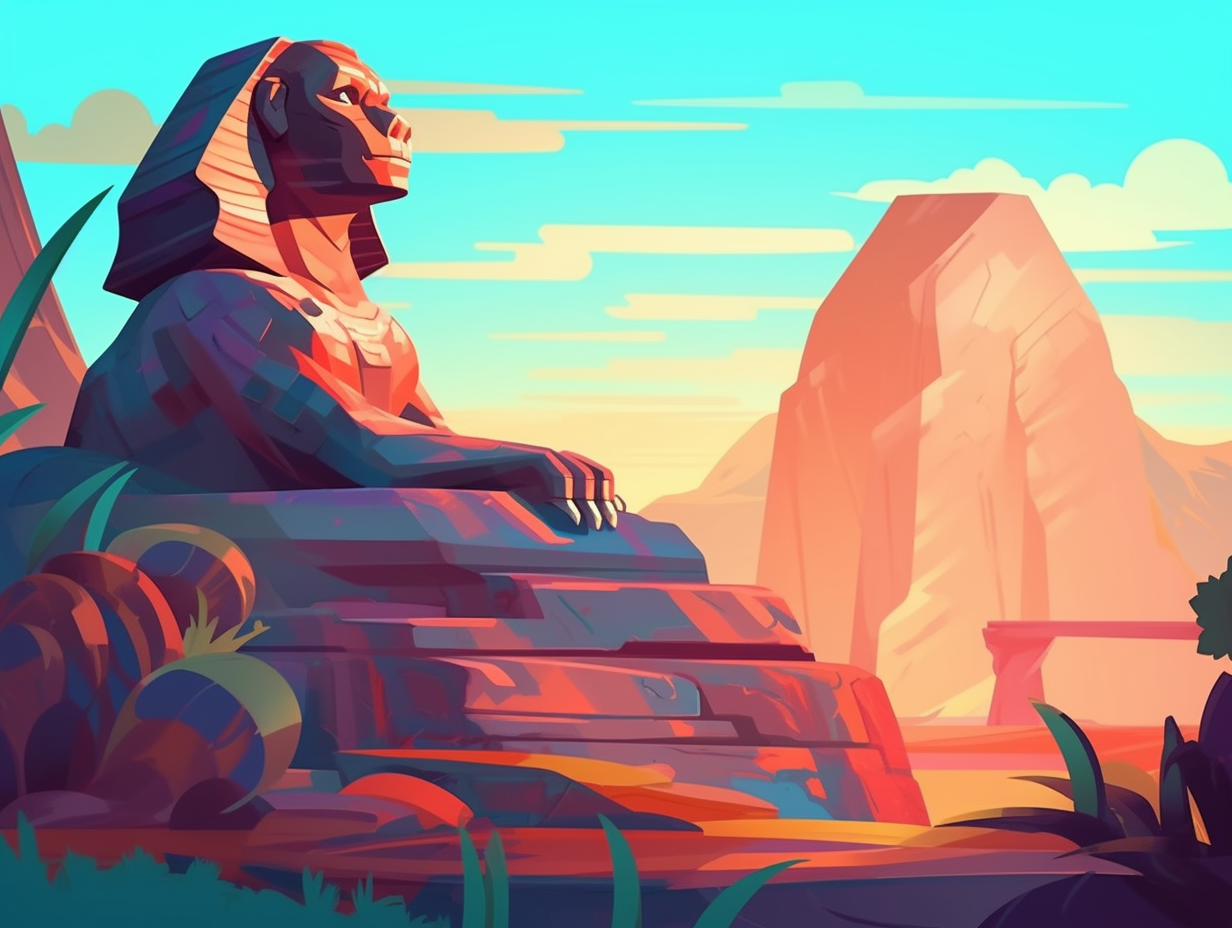Discover the Secrets: Top 14 Amazing Fun Facts About the Pyramids of Giza

1. Sphinx's Smirk from One Stone
Talk about a stone-cold smile: The enigmatic grin of the Great Sphinx of Giza is actually hewn from one colossal chunk of limestone. The statue spans an impressive 73 meters long and stands 20 meters tall, making it the world's largest monolithic statue and one of the oldest too, dating back to around 2500 BC for the pharaoh Khafre. Despite sporting some wear and tear (including a mysteriously missing nose), this ancient cat managed to dodge the claws of time and remains standing tall today.
Source => en.wikipedia.org
2. Ageless Pyramid Diva
Whoever said "you can't hide your age" clearly never met the Great Pyramid of Giza, still basking in the limelight as the lone diva among the Seven Ancient Wonders of the World: Casually weighing a whopping 5.22 million metric tons (5.75 million tons) and towering at a staggering 138 meters (451 feet) today, this geriatric beauty boasts an almost 4,000-year-old history as Khufu's final resting place, all while maintaining a mystique that rivals any ephemeral celebrity.
Source => education.nationalgeographic.org

Did you know the Great Sphinx of Giza was once a colorful masterpiece? Discover the vibrant shades that adorned this ancient wonder!
=> Fun Facts about The-Sphinx
3. Mysterious Celestial Shafts
Whoever designed the Great Pyramid of Giza must have been quite the "shaft-master" – creating mysterious tunnels that leave experts starry-eyed: These enigmatic shafts, found within the 4,600-year-old pyramid, align with certain celestial bodies, sparking debates on whether they served spiritual purposes or had a practical function in the pyramid's construction.
Source => en.wikipedia.org
4. Celestial GPS Hack
While ancient Egyptians failed to invent the star-studded royal GPS, they probably came up with the second best thing: the celestial pole star-hacks! In a bid to align the Pyramids of Giza with precise north-south orientation, architects turned to two stars – Kochab and Mizar – near the celestial pole. By cleverly using a plumb line, they ensured the Great Pyramid was almost perfectly in sync with true north, while others showed slight inaccuracies. And all this happened around 2467 BC during the reign of Pharaoh Khufu, after which the accuracy of alignment took a bit of a vacation.
Source => theglobeandmail.com

5. Pyramid's Lost Glamour
Feeling a little rough around the edges? Don't fret, the Great Pyramid of Giza can relate: Originally, this majestic wonder was a dazzling diva, draped in shimmering white limestone, visible from miles away like a telenovela superstar. Alas, time's cruel hand has stripped away her glamorous garb, baring her coarser inner blocks for all to see.
Source => nationalgeographic.com
6. Menkaure's Fancy Gabled Ceiling
You could say Menkaure was "raising the roof" on pyramid design: His pyramid at Giza, the smallest of the trio, boasts a unique gabled ceiling with a barrel vault shape, and once housed a colossal basalt sarcophagus, now chilling in the British Museum with the remains of a wooden coffin.
Source => landioustravel.com
7. Worker's Benefits at Giza
Who needs whip-cracking slave drivers when you've got worker's benefits? Feast your eyes on this twist of history: The Pyramid of Giza builders were actually local Egyptians who were paid and well-cared for, living in organized camps with plenty of food and accommodations. Their tombs, just a stone's throw from the pharaohs', were stocked with essentials for their afterlife adventures, and their graffiti tags give us a glimpse into their daily lives.
Source => discovermagazine.com
8. Super Smooth Limestone Precision
You'd think the ancient Egyptians invented "smooth as a baby's bottom," but they actually crafted a precision fit that even modern opticians would envy: The limestone casing stones, which were once part of the Great Pyramid of Giza's outer layer, provided a smooth and polished surface that still captivates visitors today, despite some of them being repurposed during the Middle Ages.
Source => thevintagenews.com
9. Ancient Urban Planning
Forget ancient beer pong and mummy Snuggies, the pyramids of Giza were also home to some of the world's first masterchefs and bachelor apartments: Researchers have uncovered remnants of workers' living quarters, bakeries, breweries, and kitchens, all situated within a bustling village that housed laborers responsible for quarrying and moving the colossal stones for pyramid construction. This urban planning marvel dates back to the reigns of Khafre and Menkaure – talk about ancient inspiration for modern city life!
Source => en.wikipedia.org

10. Hidden Pyramid Corridor
The ancient architects of Giza had a knack for hide and seek, probably playing it since pre-school with secret compartments: Recent scans revealed a previously unknown 30-foot-long hidden corridor above the Great Pyramid's entrance, potentially providing new insights into the mysterious inner chambers of the 4,500-year-old structure.
Source => smithsonianmag.com
11. Secret Burial Chambers
Contrary to ancient Egyptian homeowner's association regulations, the pharaohs' bodies were NIMBY (Not In My Backyard) when it came to pyramid real estate: The actual burial chambers were tucked away in secret underground tunnels beneath the pyramids to safeguard the pharaohs and their treasures from the ever-curious tomb raiders.
Source => mylearning.org
12. Old-School Lifting Devices
Who needs gym memberships when you have ancient Egyptian levers and pulleys? These old-school lifting devices were the real personal trainers of the pyramid construction days: Although used for smaller objects, there's no evidence to show they could heave the colossal stones weighing up to fifty tons that make up the legendary Pyramids of Giza.
Source => touregypt.net
13. Napoleon's Spooky Sleepover
If the idea of a sleepover ever tickled the fancy of history's most ruthless emperor, it must have been one heck of a slumber party: Napoleon Bonaparte spent seven hours in the Great Pyramid of Giza's King's chamber in 1799. The little general emerged looking as pale as a ghost and sealed-lipped about his experience, but it's said that this mysterious night only reinforced his belief in the pyramids' mystical powers and his own fate as a mighty conqueror.
Source => medium.com
14. Friendly Pyramid Rivalries
Who says pyramid schemes are always bad? There's actually a case of a monumental project filled with bickering construction crews and colorful graffiti: The Pyramids of Giza were built not just by slaves, but by conscripted Egyptian peasants, skilled artisans, and even high-ranking political and religious officials who were well-fed and had their own unique work group rivalries.
Source => firstthings.com
Related Fun Facts




















